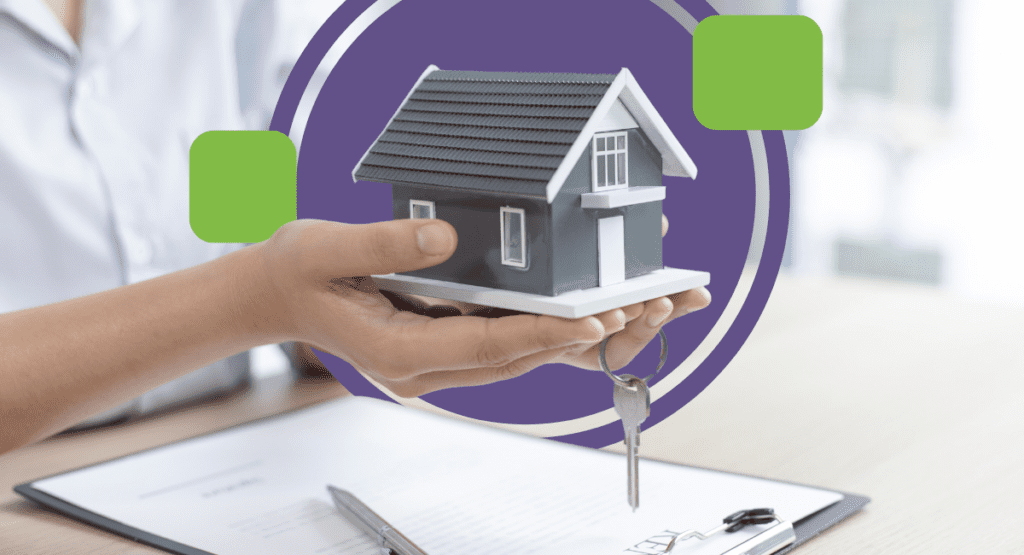Buying a home comes with many decisions beyond finding a property that fits your needs, such as choosing the best mortgage option for your household. The whole process can be stressful, confusing and time-consuming. But if you or your spouse are in healthcare and served in the United States Armed Forces, then you might have access to two of the most beneficial types of loan programs out there: The VA loan vs. physician loan.
Although these programs have some similarities, like $0 down payment opportunities, there isn’t a one-size-fits-all mortgage solution. Here’s what you need to know about the VA loan vs. a physician loan to help decide your best homeownership path forward.
What’s a VA loan and who qualifies for this benefit?
The U.S. Department of Veterans Affairs (VA) loan program helps active duty service members, veterans and eligible surviving spouses purchase a home with little to no money down. These loans are backed by the government but administered by VA-approved mortgage lenders.
VA home loans come with some major benefits, such as no down payment and competitive interest rates. But depending on whether you have a VA disability rating, you might be required to pay a VA funding fee which can quickly skew the benefits if you qualify for other low down payment mortgage solutions.
Pros of a VA loan
- No down payment required. Qualified VA borrowers can finance up to 100% of the home’s purchase price with $0 down.
- No private mortgage insurance (PMI). With other mortgage options, such as a conventional loan or FHA loan, borrowers are required to carry PMI if they aren’t able to put down at least 20% of the home’s purchase price. However, a VA loan has no PMI requirement, regardless of your down payment amount.
- Easy qualification process. VA loans provide more flexibility for borrower approval, including higher allowable debt-to-income ratios (DTI). Generally, you’ll need a DTI ratio of 41% or less, but lenders have more discretion to work with your financial situation since the VA doesn’t set a maximum ratio.
- Competitive interest rates. Mortgage lenders typically offer lower interest rates with a VA loan than other mortgage options. For example, VA loan interest rates are generally around 0.5% lower than conventional mortgage rates.
Cons of a VA loan
- The VA funding fee can be costly. The funding fee is a flat fee that’s required at the time of closing (or can be rolled into the loan) that varies depending on how many times you’ve used the VA loan. For example, first-time users providing less than a 5% down payment can expect a funding fee of 2.3%. However, this fee will be waived if you have a service-connected disability or meet other requirements.
- VA appraisal guidelines can be strict. The appraisal process requires that homes meet the VA’s Minimum Property Requirements, which can delay the homebuying process or halt it altogether for fixer-upper properties.
- Can only be used for primary residences. VA loans are to be used for owner-occupied residences, which can make it more difficult to house hack via rental income.
- Sellers and real estate agents might be hesitant. Due to VA loan horror stories, some home sellers and agents might try to avoid working with VA home buyers. So, it’s important to find an agent and lender that has VA loan experience.
What’s a physician mortgage loan?
A physician mortgage loan is designed for medical doctors, dentists, residents and other select healthcare professionals in the early stages of their career (usually those with less than 10 years of experience).
This low down payment solution provides many benefits to qualifying borrowers. But depending on your profession and where you live, it can be challenging to find a mortgage lender offering this product.
Pros of a physician mortgage loan
- Low down payment opportunities. Many physician mortgage lenders offer a variety of down payment options, usually ranging from 0% to 10% of the home’s purchase price.
- No PMI requirement. This special home financing program doesn’t require PMI, even if you take advantage of a $0 down option.
- Higher loan limits. Loan amounts vary by lender, however, many programs offer financing up to $1 million or more without triggering higher interest rates.
- Ability to close up to 90 days before employment begins. This perk allows young professionals to get settled into a new home before starting new employment. However, each lender will have its own requirements, including an acceptable employment contract.
- Favorable student loan debt treatment. Many physician mortgage lenders don’t include student loans in their DTI calculation — or they use a more flexible formula that ultimately benefits borrowers with six-figure student debt balances.
- Some lenders allow second homes, vacation homes or multi-unit properties. Although physician mortgage loans are designed to purchase or refinance a primary residence, some lenders allow additional eligible property types.
Cons of a doctor mortgage loan
- Limited professions are eligible. Physician loan programs typically have narrow eligibility requirements based on profession or degree (e.g., MD, DO, DDS, DMD). For example, physician assistants and nurse practitioners might have a harder time qualifying for some programs than, say, a medical doctor.
- Programs might not be available in all states. Many lenders offer their physician mortgage product in select states rather than nationwide.
- Credit score requirements can be high. Most physician home loan programs require a credit score over 700. However, this requirement varies by lender.
- Mortgage loan options might be limited to adjustable rates. Depending on the lender, you might have limited access to fixed-rate options.
- Qualifying for a higher loan amount results in higher monthly payments. Borrowers might unintentionally overextend themselves since they’ll likely qualify for a higher loan amount than other traditional forms of lending.
VA loan vs. physician loan: Choosing the right mortgage for your situation
With rising interest rates and limited housing supply, physicians and other medical professionals have a unique home financing opportunity via a physician mortgage loan. However, VA loans might be a better option for physicians who are also veterans (or are married to one). But it depends on your individual situation.
Let’s say you plan to buy a $500,000 home with no money down using the VA loan with a 6.5% interest rate. As a first-time VA loan user providing a 0% down payment, the VA funding fee would be 2.3% of the loan amount, or $11,500.
This funding fee, and any other closing costs, added to your mortgage will increase your mortgage’s APR (which is the true cost). In this example, your APR would be 6.72%.
Therefore, a physician mortgage is likely the better option, given it has similar benefits and around the same interest rate — but it doesn’t require a funding fee that drives up your APR.
However, if you meet certain requirements, such as receiving VA compensation for a service-connected disability, then the VA funding fee will be waived. In this case, the VA loan will likely provide the most benefit to your household.
The bottom line
Other factors might influence whether a VA loan vs. a physician loan is right for you. For example, a 15-year adjustable-rate mortgage might provide a significant reduction in your physician mortgage interest rate that could beat out current VA loan rates. Alternatively, a mortgage lender might provide certain incentives that help push one mortgage option to the front of the list.
It’s best to contact an experienced lender that can help weigh your options and find the best fit. Fill out the form below to start receiving physician mortgage quotes.

